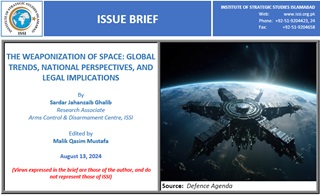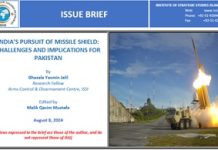The deployment of devices with destructive capabilities in orbit is known as spatial weaponization. Spatial weaponization refers to the deployment of weapons, whether space-based or on Earth, that pose a threat to space security, interfere with peaceful uses of space, or produce destructive effects in space, whether kinetic or non-kinetic[1]. Once considered the ultimate frontier for scientific advancement and peaceful exploration, space is now increasingly perceived through the lens of military competition. The susceptibility of satellites to potential attacks has become a critical concern as countries develop and utilize these assets for communication, reconnaissance, and navigation. The offensive capabilities of space weaponization could potentially add a new layer of complexity to global security dynamics.[2] It involves a state installing a weapon in outer space to gain an advantage over the enemy, thereby giving the state the capability to damage the enemy’s territory and assets while also protecting its own space assets from the enemy. When assessing the legal status of outer space, it is critical to distinguish between space weaponization and space militarization. The militarization of space is fundamentally a form of space utilization by military spacecraft for military use; however, space weaponization is not always a component of this endeavor. It involves sending weapons into space for any length of time to attack targets in space or on Earth. The Weaponization of Space can be classified into three distinct categories[3]:
Home ISSI Publications Articles Issue Briefs Issue Brief on “The Weaponization of Space: Global Trends, National Perspectives, and...















